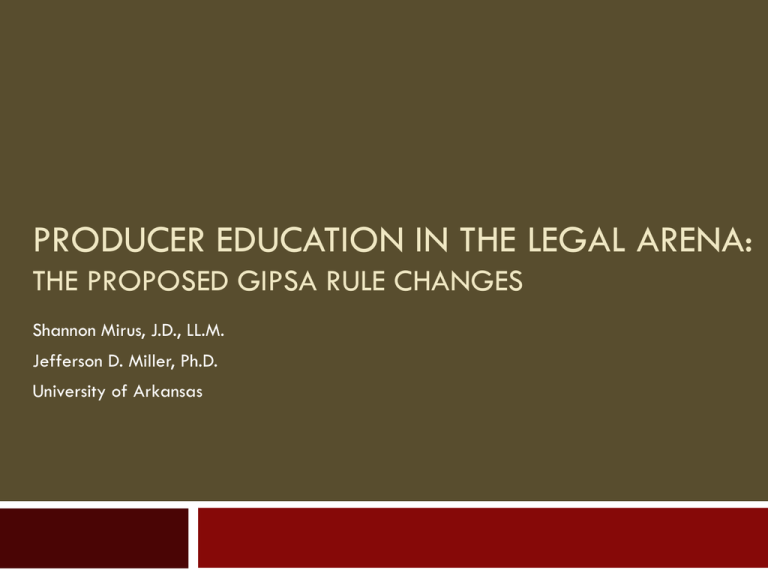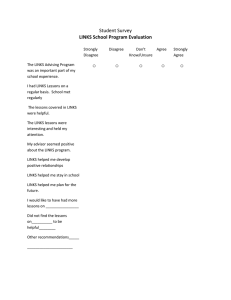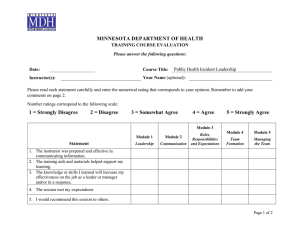PRODUCER EDUCATION IN THE LEGAL ARENA: THE PROPOSED GIPSA RULE CHANGES
advertisement

PRODUCER EDUCATION IN THE LEGAL ARENA: THE PROPOSED GIPSA RULE CHANGES Shannon Mirus, J.D., LL.M. Jefferson D. Miller, Ph.D. University of Arkansas www.NationalAgLawCenter.org The Proposed GIPSA Rule Changes Proposed rule from GIPSA Includes significant changes for livestock and poultry Why address this topic? Great deal of perceived risk for producers Large number of inquiries Covered in ag press Politically contentious Program Objectives Provide a better understanding of what GIPSA is and what it does Provide a better understanding of the notice and comment rulemaking process and how producers can participate Provide a better understanding of the proposed GIPSA rule Provide unbiased information Planning the Workshops Proposed rule published on June 22, 2010 Comment period extended to November 22, 2010 August, 2010 - Decision to address this topic Goal to have all workshops wrapped up by Nov. 1 Planned 3 workshops and 1 webinar originally Fayetteville, AR Russellville, AR Nashville, AR Chosen because of geography of state and concentration of producers Key Considerations Having support of key members of community Key producers Not having opposition from integrators Location & Dates Easy access Neutral sites Avoid community events if possible, all in the evening Utilized local extension agents Publicizing Workshops Local word of mouth Connecting with producers Local meetings Integrators Newspapers Included in newsletter to growers Some growers sent the information to local papers Emails & Listservs Collected email information for producer groups around the country to help publicize the webinar Workshop Content Who we are And who we aren’t What is GIPSA What are regulations What is the notice and comment process Substance of rules Question & Answer Workshop Delivery Keep workshops to 2 hours Multiple presenters to break up the session Wait until the end to take questions Provided paper and pens for writing questions down during the workshop Moderated question & answer session Several producers had individual questions afterwards We stayed as long as producers still had questions Additional Workshops Success of first two workshops resulted in invitations to present in other locations Ruston, LA Poteau, OK Oklahoma Cooperative Extension Service & OSU Booneville, AR Louisiana Farm Bureau & Dept of Agriculture & Forestry USDA Dale Bumpers Small Farm Research Station Inviting organization was responsible for: Securing location Publicizing event Additional Workshops Publicity Louisiana Direct mailing from Commissioner of Agriculture Support from state Farm Bureau Oklahoma Organized by Extension Promoted locally and regionally by Extension Booneville, Smallest AR turnout Hosted because they had received inquiries locally Word of mouth & friends Evaluation Methods Survey developed using principles from Dillman 16 Questions 1-7 about the content of the workshop and materials 8-9 how participants learned about the workshop 10-13 about their role in ag & production area 14-16 age, gender & county Mostly scale or multiple choice questions Some open ended questions Evaluations Implemented during 3rd workshop Imperfect information Data from 4 workshops + webinar Distributed at the end of the workshops, after Q&A session Webinar: Online survey, link provided after Q&A Analysis Frequencies Percentages Evaluation Results Just the numbers 381 in attendance at 5 workshops 225 responses from all 5 workshops Response rate of 59% Evaluation Question #1 I have a better understanding of what GIPSA is and what it does. 60.00% 50.00% 51.11% 42.67% 40.00% 30.00% 20.00% 10.00% 0.00% 4.44% 1.33% 0.44% Strongly Somewhat Neutral Agree Agree Somewhat Strongly Disagree Disagree Evaluation Question #2 I have a better understanding of the notice and comment rulemaking process. 50.00% 45.00% 40.00% 35.00% 30.00% 25.00% 20.00% 15.00% 10.00% 5.00% 0.00% 48.00% 43.56% 7.11% 0.78% Strongly Agree Somewhat Agree Neutral Somewhat Disagree 0.00% Strongly Disagree Evaluation Question #3 I have a better understanding of how I can participate in the notice and comment rulemaking process. 60.00% 55.11% 50.00% 40.00% 37.33% 30.00% 20.00% 10.00% 7.11% 0.44% 0.00% Strongly Agree Somewhat Neutral Agree Somewhat Disagree 0.00% Strongly Disagree Evaluation Question #4 I have a better understanding of the proposed GIPSA rules. 60.00% 52.23% 50.00% 40.00% 37.05% 30.00% 20.00% 10.00% 7.59% 2.68% 0.00% 0.45% Strongly Agree Somewhat Neutral Agree Somewhat Disagree Strongly Disagree Evaluation Question #5 I am more likely to submit a comment expressing my option on the proposed GIPSA rules. 45.00% 43.95% 40.00% 35.00% 30.00% 26.01% 25.00% 26.91% 20.00% 15.00% 10.00% 5.00% 2.69% 0.00% 0.45% Strongly Agree Somewhat Agree Neutral Somewhat Disagree Strongly Disagree Evaluation Question #6 I feel that the material was presented without bias for or against the rules. 90.00% 80.89% 80.00% 70.00% 60.00% 50.00% 40.00% 30.00% 20.00% 10.00% 0.00% 15.56% 3.56% 0.00% Strongly Agree Somewhat Agree Neutral Somewhat Disagree 0.00% Strongly Disagree Evaluation Question #7 I feel that the materials provided helped further my understanding of the proposed GIPSA rules. 60.00% 51.56% 50.00% 41.78% 40.00% 30.00% 20.00% 10.00% 0.00% 4.89% 0.89% Strongly Agree Somewhat Neutral Agree Somewhat Disagree 0.44% Strongly Disagree Sources of Pre-Workshop Publicity Source Frequency Percentage University Cooperative Extension Service/Agent 41 29.3% Family & Friends 40 28.6% Agriculture Special Interest Groups (Farm Bureau, Women in Ag, NASDA) 23 16.4% Dept of Ag & Forestry 22 15.7% Commodity Groups (Cattle Assn, NPPC, Poultry Federation, Cattlemen’s) 6 4.3% National Ag Law Center 4 2.9% Integrator 3 2.1% GIPSA 1 0.7% Media Used to Learn About the GIPSA Workshops Type of Media Frequency Percentage Newspaper 40 26.7% E-mail 32 21.3% Direct Mail 29 19.3% Public Meeting 12 8.0% Organizational Web Sites 12 8.0% Newsletter 11 7.3% Radio News 4 2.7% Word of Mouth/Telephone 3 2.0% Facebook 3 2.0% Twitter 1 0.7% Other 3 2.0% Conclusions Conclusions Objectives were met Remaining 80%+ Most unbiased was our #1 goal felt we presented unbiased information felt they learned about: GIPSA Notice & Comment Rulemaking Substance of the proposed rule Conclusions Producers will participate in workshops that provide information on complex topics State wide workshops are successful with 75 participants These were regional workshops averaging 76.2 participants We were sought out in several cases to present in other locations Demand for information was nationwide Lessons Learned Plan to evaluate from the beginning Follow up surveys for further research Did you actually submit a comment? Why or why not? Survey questions are more likely answered if options are presented Lessons Learned Important to indentify key community leaders and get them on board Credibility Word of mouth When maintaining a position in the middle, be prepared for fire from both sides. Credibility of the Center hinged upon remaining neutral and unbiased Questions? Thank You! Shannon Mirus, J.D., LL.M. smirus@uark.edu Jefferson D. Miller, Ph.D. jdmiller@uark.edu




